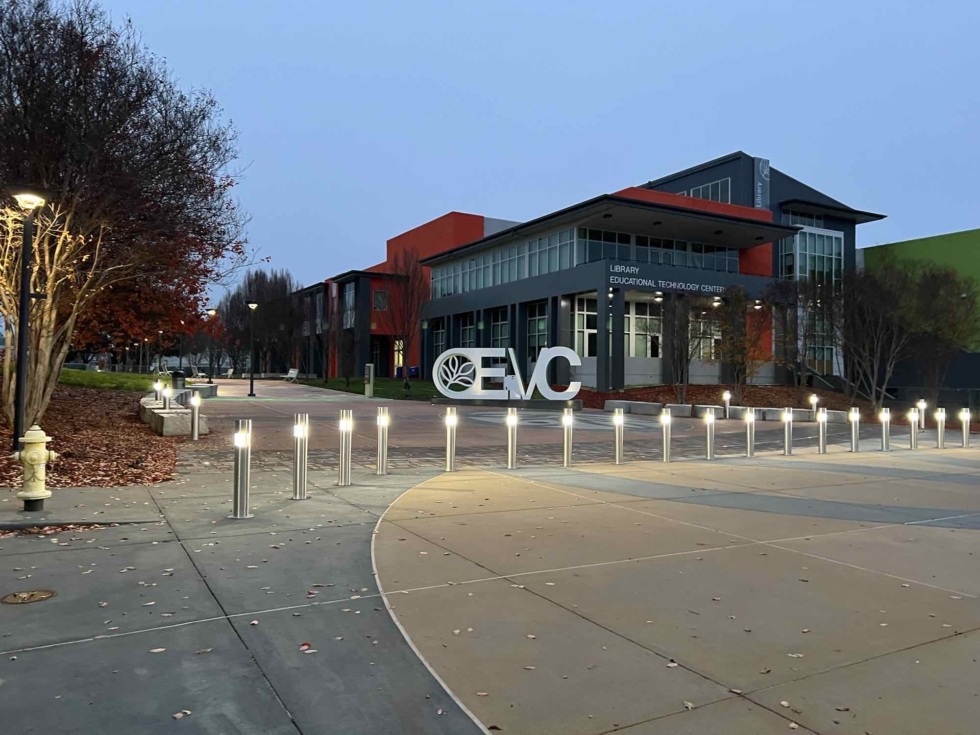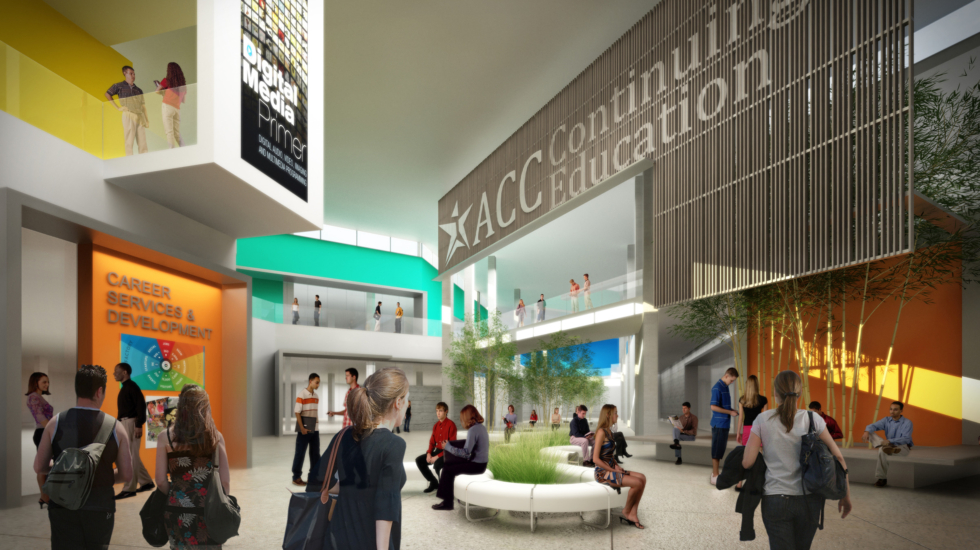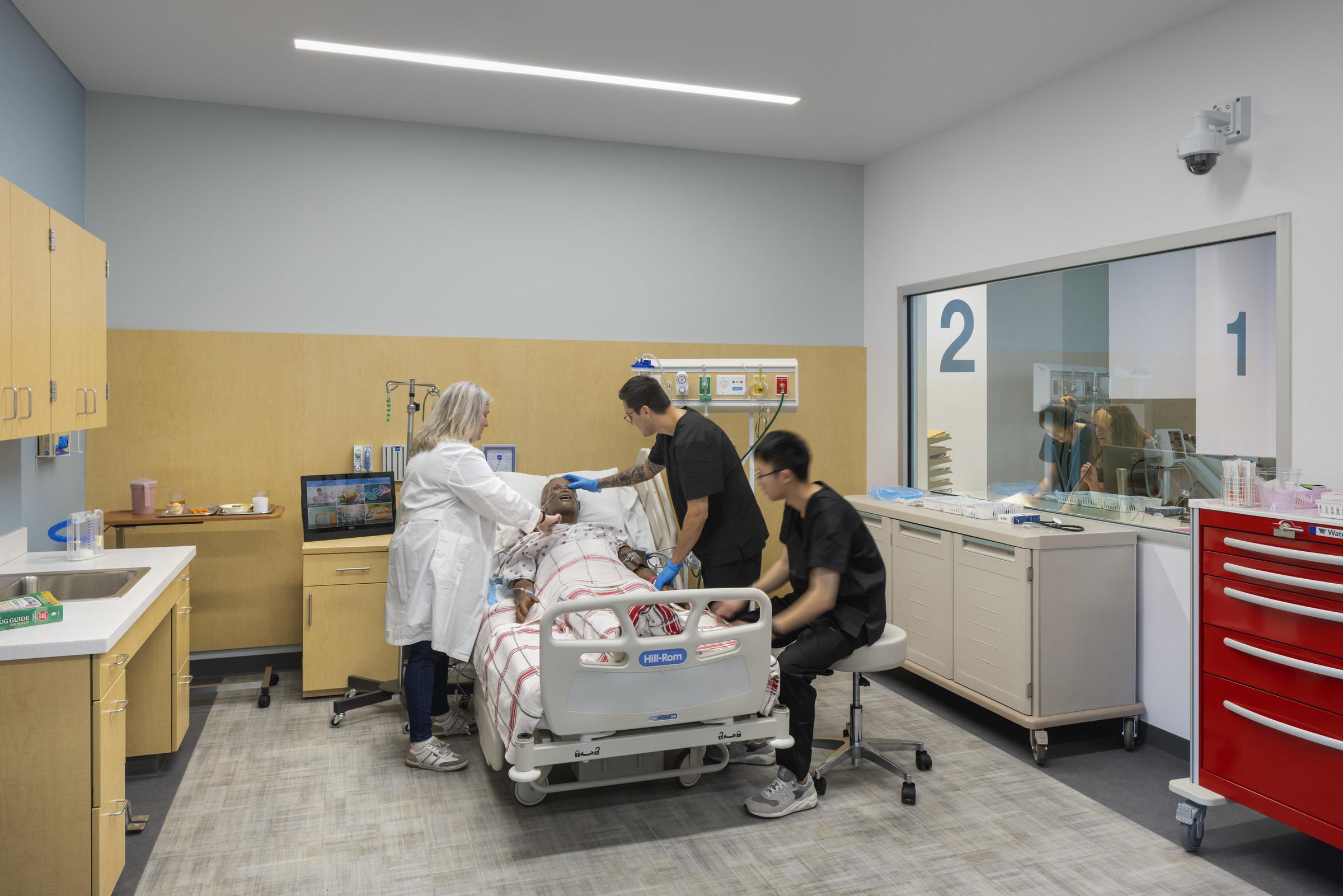Designing for community colleges hits home—literally—with Ramu Ramachandran, a principal in Perkins Eastman’s Chicago studio. His wife, Reva, got interested in accounting after they had kids; their local community college offered classes, and they figured it would be an affordable way for her to explore the field. Her professors then took her under their wing, inspiring her to complete a full course of study and earn her CPA. “We’re big champions for community colleges around here. It’s a very practical way of managing finances for families,” Ramachandran says.
“I think community colleges are an incredible resource,” says Carisima Koenig, a principal and co-leader of the College + University practice. For older professionals who are switching course midlife, for traditionally aged students who want to save money before transferring to a four-year university, and for those who need specific skill sets to advance in their profession, she says, “community colleges have to be almost all things to all people,” she says.

A newly designed plaza at Evergreen Valley College in San Jose, CA, increases accessibility and widens sightlines across the campus. Both new and existing buildings were painted in a color code for ease of wayfinding, while the new EVC signage provides an “Instagram moment.” Photograph by Andrew Rugge © Perkins Eastman








